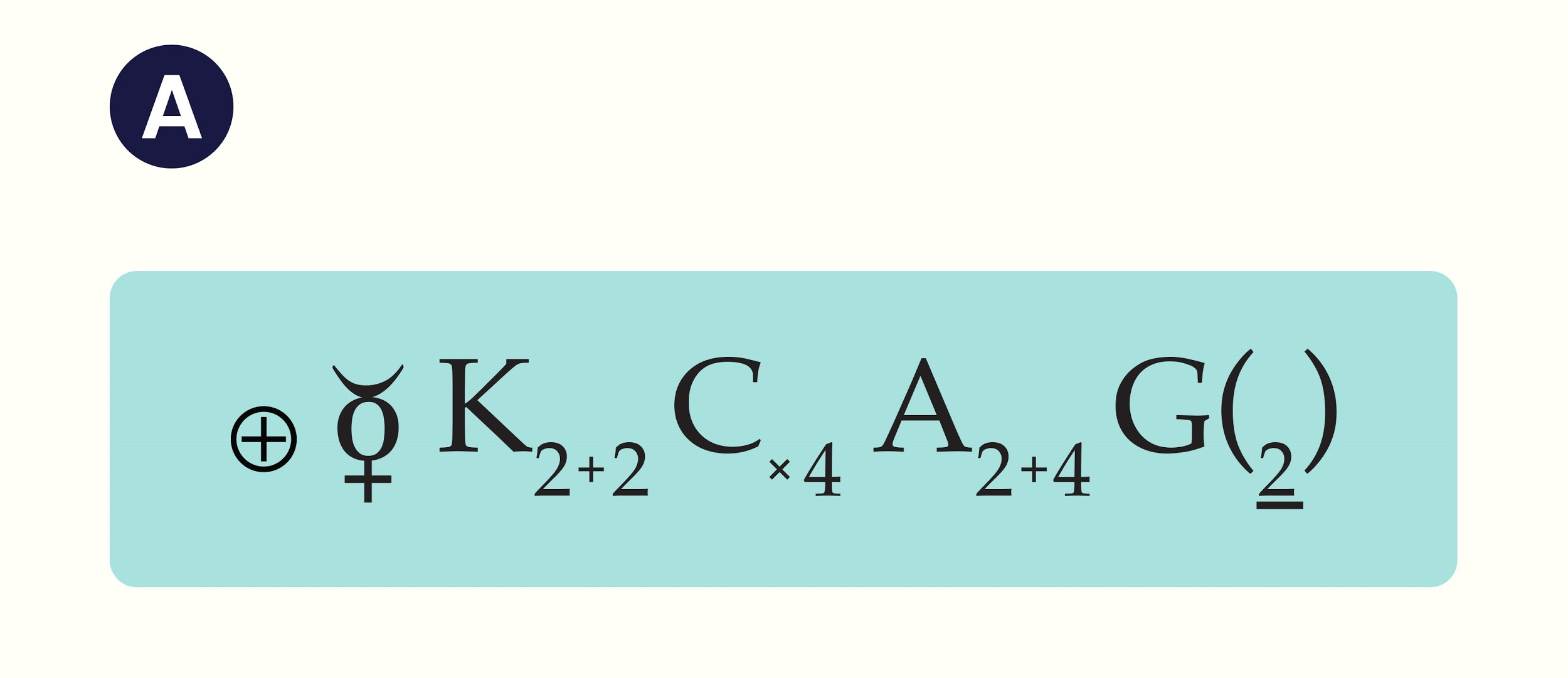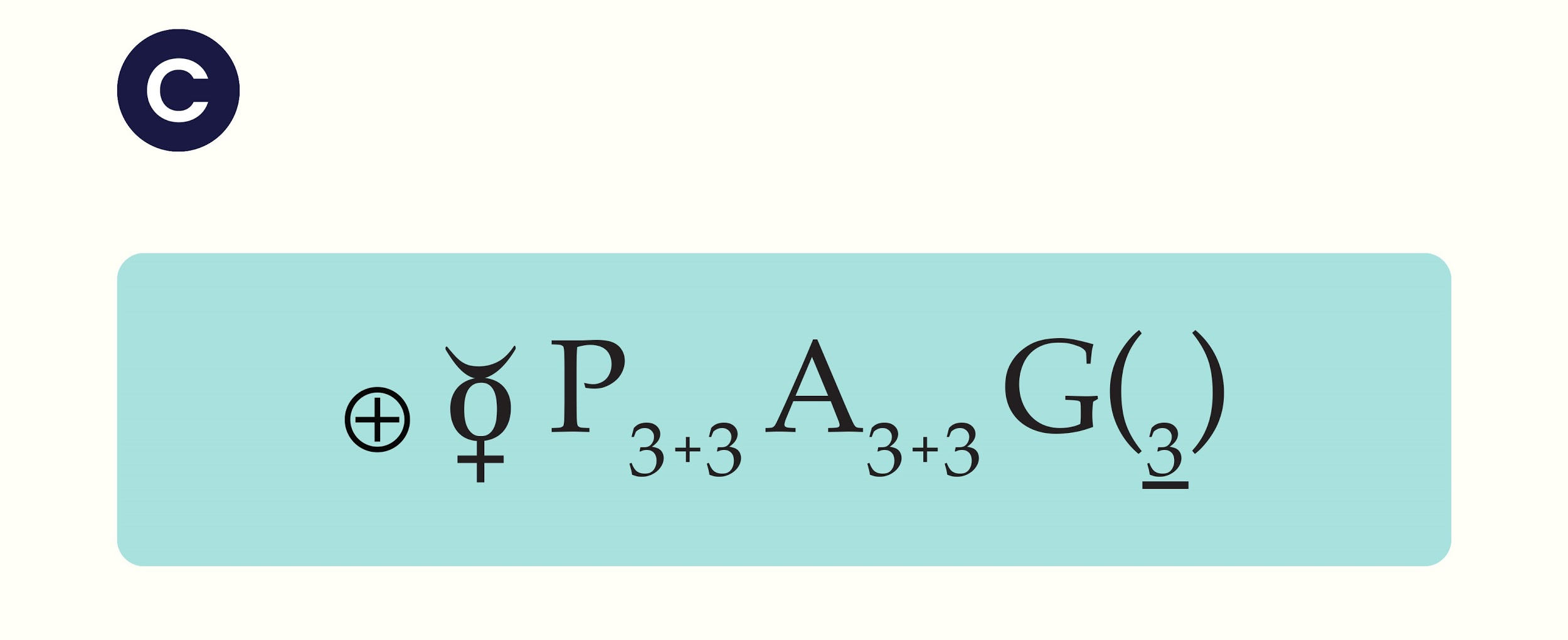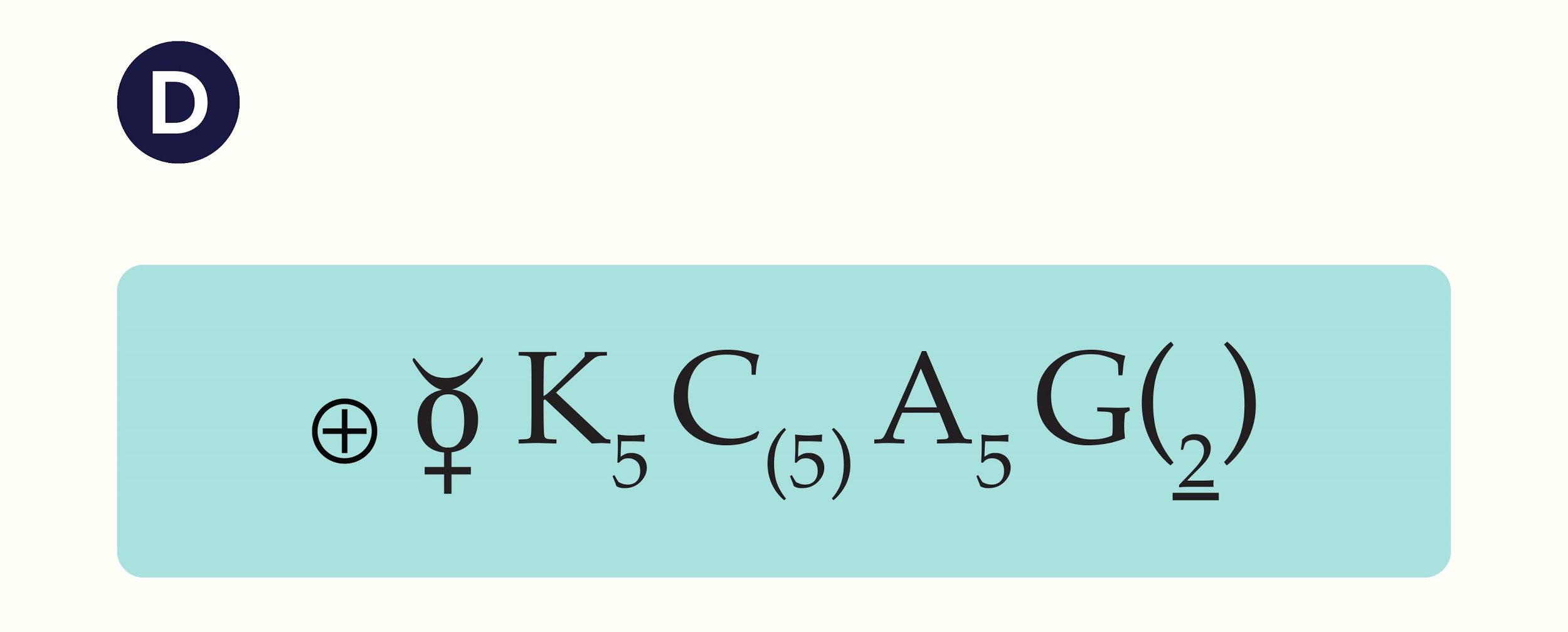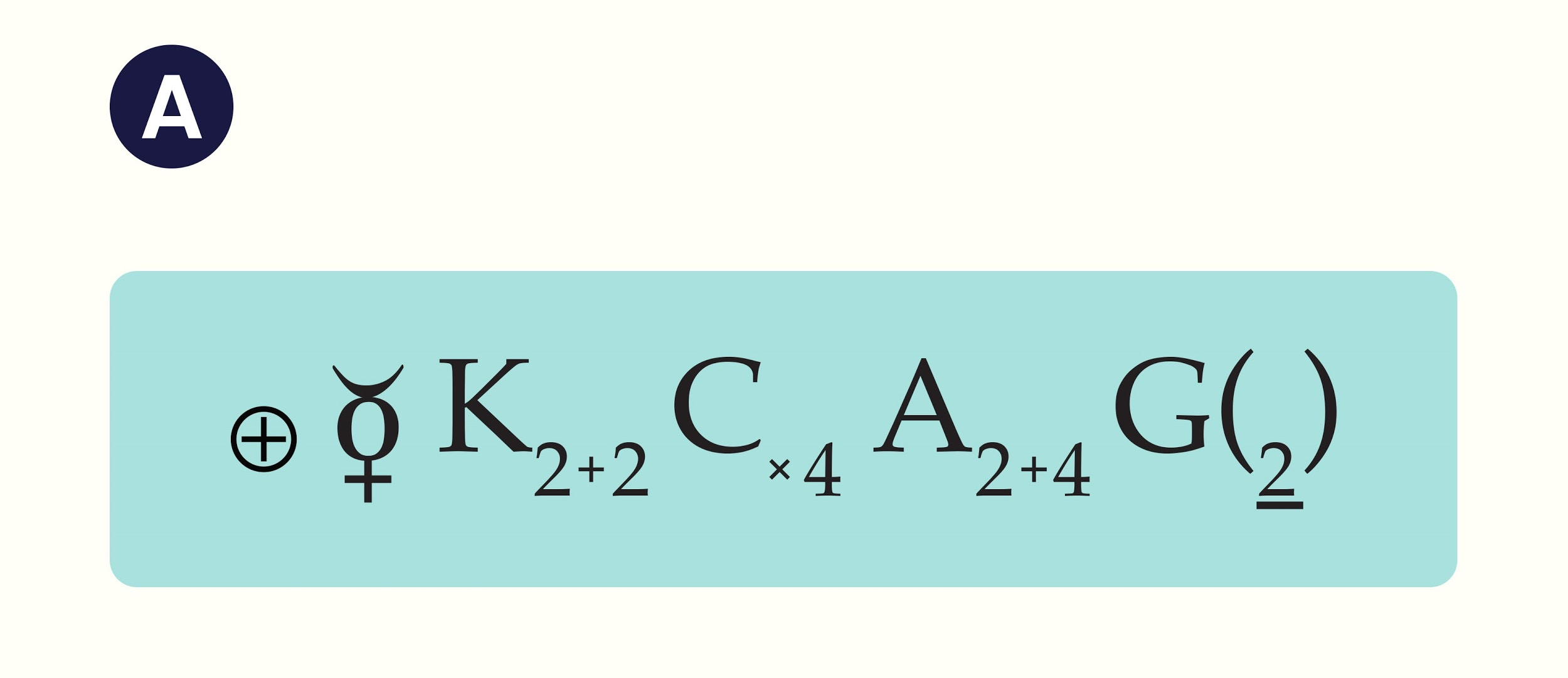
Floral formula of Brassicaceae (mustard) is -
(a)

(b)

(c)

(d)





Answer
563.4k+ views
Hint: - The floral formula of a flower is a term that gives an idea of the structure of a flower. It also provides a better idea of the genus and phylum of the plant. Flowers of Brassicaceae are distinguished by their symmetry and presence of reproductive parts, hence their floral formula will also be unique.
Complete answer:
- The floral formula is a term to describe the structure of a flower using letters, numbers, and various symbols. It provides information regarding symmetry, sexuality, and interrelationship of various floral parts such as the calyx, corolla, androecium, and gynoecium in a compact form.
- The flowers of mustard are actinomorphic (show radial symmetry), rarely zygomorphic, hermaphrodite (possess both male and female flowers), contain four sepals in two whorls (dimerous), have four petals, a diagonally arranged-cruciform, six stamens, are tetradynamous (where two lateral stamens are smaller and four median stamens are larger), have a bicarpellary gynoecium and parietal placentation, are syncarpous, and bilocular due to the formation of a false septum or a replum.
- So, the formula is denoted by

Additional Information: - Brassicaceae or Cruciferae are commonly known as mustards, the cabbage family, or the crucifers.
- The floral formula starts from the bract and bracteole to the symmetry and sex of the flower, the calyx, corolla, androecium, and gynoecium. The number of parts of each organ is indicated in figures (1, …, 4, 5) after the relevant alphabetical symbols (K, C, A, G).
- A number placed just after the symbol as a subscript represents the number of parts in that particular whorl. If the parts of a whorl are connected then the number is bracketed. For example, if four free sepals are present in a whorl it is denoted as ${ K }_{ 4 }$ and if they are united, it is denoted as ${ K }_{ (4) }$. If there is more than one whorl, it is represented as a sum of the whorls. If there are four free sepals present on two whorls each, it is represented as ${ K }_{ 4\quad +\quad 4 }$.
- Groups of organs can be represented by writing the number of instances in the group as superscript. For example, ${ A5 }^{ 2 }$ means five groups of two stamens.
Note: - The flowers of Brassicaceae are self as well as cross-pollinated. Some species show cleistogamy while some flowers attract insects.
- The inflorescence of the flowers can be raceme, corymb, or corymbose raceme.
- The fruit is siliqua or lomentum.
Complete answer:
- The floral formula is a term to describe the structure of a flower using letters, numbers, and various symbols. It provides information regarding symmetry, sexuality, and interrelationship of various floral parts such as the calyx, corolla, androecium, and gynoecium in a compact form.
- The flowers of mustard are actinomorphic (show radial symmetry), rarely zygomorphic, hermaphrodite (possess both male and female flowers), contain four sepals in two whorls (dimerous), have four petals, a diagonally arranged-cruciform, six stamens, are tetradynamous (where two lateral stamens are smaller and four median stamens are larger), have a bicarpellary gynoecium and parietal placentation, are syncarpous, and bilocular due to the formation of a false septum or a replum.
- So, the formula is denoted by

Additional Information: - Brassicaceae or Cruciferae are commonly known as mustards, the cabbage family, or the crucifers.
- The floral formula starts from the bract and bracteole to the symmetry and sex of the flower, the calyx, corolla, androecium, and gynoecium. The number of parts of each organ is indicated in figures (1, …, 4, 5) after the relevant alphabetical symbols (K, C, A, G).
- A number placed just after the symbol as a subscript represents the number of parts in that particular whorl. If the parts of a whorl are connected then the number is bracketed. For example, if four free sepals are present in a whorl it is denoted as ${ K }_{ 4 }$ and if they are united, it is denoted as ${ K }_{ (4) }$. If there is more than one whorl, it is represented as a sum of the whorls. If there are four free sepals present on two whorls each, it is represented as ${ K }_{ 4\quad +\quad 4 }$.
- Groups of organs can be represented by writing the number of instances in the group as superscript. For example, ${ A5 }^{ 2 }$ means five groups of two stamens.
Note: - The flowers of Brassicaceae are self as well as cross-pollinated. Some species show cleistogamy while some flowers attract insects.
- The inflorescence of the flowers can be raceme, corymb, or corymbose raceme.
- The fruit is siliqua or lomentum.
Recently Updated Pages
Master Class 12 Business Studies: Engaging Questions & Answers for Success

Master Class 12 Economics: Engaging Questions & Answers for Success

Master Class 12 English: Engaging Questions & Answers for Success

Master Class 12 Maths: Engaging Questions & Answers for Success

Master Class 12 Social Science: Engaging Questions & Answers for Success

Master Class 12 Chemistry: Engaging Questions & Answers for Success

Trending doubts
What are the major means of transport Explain each class 12 social science CBSE

Which are the Top 10 Largest Countries of the World?

Draw a labelled sketch of the human eye class 12 physics CBSE

How much time does it take to bleed after eating p class 12 biology CBSE

Explain sex determination in humans with line diag class 12 biology CBSE

Differentiate between homogeneous and heterogeneous class 12 chemistry CBSE




